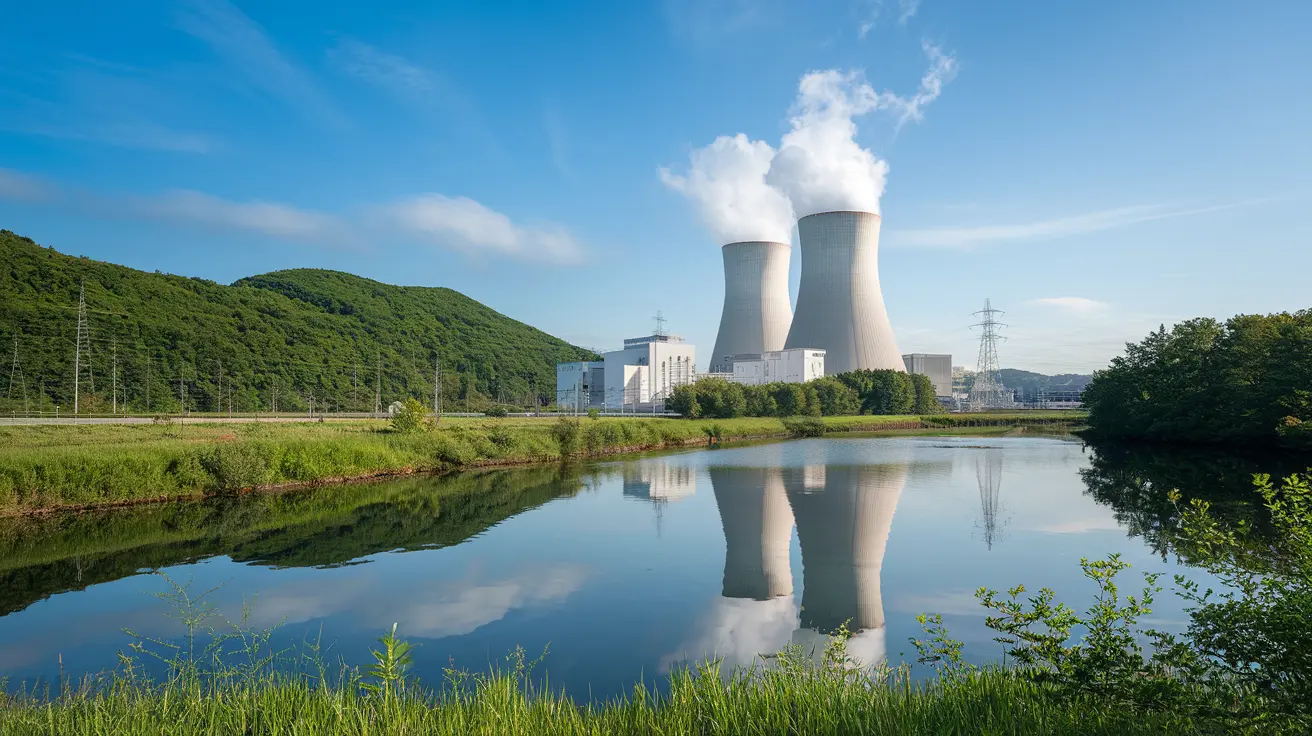Nuclear power plants generate a substantial portion of the world’s electricity. Nuclear Power Plant Shirou, like many others, offers a clean energy source with low greenhouse gas emissions. However, its environmental impact cannot be overlooked. This article delves into the various environmental aspects associated with Nuclear Power Plant Shirou, highlighting both positive and negative impacts.
Low Greenhouse Gas Emissions
One of the most significant advantages of Nuclear Power Plant Shirou is its minimal greenhouse gas emissions. Unlike fossil fuel plants, Shirou does not burn fuel, eliminating carbon dioxide (CO2) and other harmful gases from the equation. This contributes to a reduction in global warming and air pollution, making it a cleaner alternative for electricity generation.
Land Use and Habitat Disruption
Nuclear Power Plant Shirou occupies a large land area, which impacts local habitats. The construction and operation of the plant necessitate clearing large tracts of land, potentially displacing wildlife. While the plant itself might not produce air pollutants, the land use required can disrupt ecosystems. Careful planning and management are crucial to minimize this impact, ensuring that surrounding habitats remain intact.
Water Usage and Thermal Pollution
Nuclear Power Plant Shirou relies heavily on water for cooling. The plant withdraws massive amounts of water from nearby sources, which can affect local aquatic life. The heated water discharged back into the environment can lead to thermal pollution. This increase in temperature can harm aquatic ecosystems, reducing oxygen levels in the water and affecting species that are sensitive to temperature changes.
Radioactive Waste Management
A significant environmental concern associated with Nuclear Power Plant Shirou is the generation of radioactive waste. Although the plant operates with a high level of safety, managing radioactive waste remains a challenge. The waste includes spent nuclear fuel, which remains hazardous for thousands of years. Shirou’s waste management strategies involve containment and storage in secure facilities, but the long-term environmental risks are still a topic of concern.
Potential for Accidents
While nuclear power plants are designed with multiple safety systems, the risk of accidents cannot be entirely eliminated. In the event of a malfunction or human error, the consequences could be catastrophic. A major accident at Nuclear Power Plant Shirou could lead to the release of radioactive materials into the environment. This would have devastating effects on the local ecosystem, contaminating soil, water, and air, and posing long-term health risks to the population.
Impact on Local Communities
The presence of Nuclear Power Plant Shirou has both positive and negative effects on nearby communities. On the positive side, the plant provides jobs and stimulates the local economy. However, there is also a psychological impact on residents living near the plant, who may experience anxiety about potential accidents or long-term health effects. The plant’s operation also involves noise pollution, which can affect the quality of life for those living in close proximity.
Nuclear Power Plant Shirou and Climate Change
While Nuclear Power Plant Shirou contributes to reducing greenhouse gas emissions, its role in mitigating climate change is complex. The plant itself does not emit CO2, but the entire nuclear fuel cycle, including mining, processing, and waste management, does produce some emissions. Additionally, the long-term viability of nuclear power as a climate solution depends on the availability of resources and the ability to manage waste safely over time.
Decommissioning and Land Restoration
At the end of its operational life, Nuclear Power Plant Shirou will undergo decommissioning. This process involves dismantling the plant and safely disposing of radioactive materials. Decommissioning is a lengthy and costly process, with significant environmental implications. The land used by the plant may take years to restore to its original state, and ongoing monitoring will be required to ensure that no residual contamination affects the environment.
Technological Innovations for Environmental Protection
Advancements in nuclear technology can help mitigate some of the environmental impacts associated with Nuclear Power Plant Shirou. Innovations such as advanced reactors and improved waste management techniques aim to reduce the environmental footprint of nuclear energy. Additionally, research into alternative cooling methods could address the issue of thermal pollution, further minimizing the plant’s impact on local ecosystems.
The Role of Regulation and Oversight
Effective regulation and oversight are essential to ensuring that Nuclear Power Plant Shirou operates with minimal environmental impact. Strict safety standards and regular inspections help prevent accidents and ensure that waste is managed responsibly. Additionally, regulatory bodies must work closely with the plant to monitor its environmental impact, addressing any concerns that arise and enforcing compliance with environmental laws.
Public Perception and Environmental Advocacy
Public perception plays a crucial role in the operation of Nuclear Power Plant Shirou. Environmental advocacy groups often scrutinize the plant’s activities, raising awareness about potential risks and pushing for stricter regulations. The plant’s management must engage with the public transparently, addressing concerns and demonstrating a commitment to environmental protection. Public involvement in decision-making processes can also help ensure that the plant operates in a manner that is consistent with community values and environmental sustainability.
International Comparisons and Best Practices
Nuclear Power Plant Shirou can benefit from examining best practices from other nuclear power plants around the world. International collaboration allows for the sharing of knowledge and technology, helping to improve environmental performance. By adopting proven strategies from successful plants, Shirou can reduce its environmental impact while maintaining high levels of safety and efficiency.
Future Prospects and Challenges
Looking ahead, the future of Nuclear Power Plant Shirou will be shaped by evolving environmental standards and technological advancements. As the global focus on sustainability intensifies, Shirou must adapt to meet new challenges. This may involve investing in cleaner technologies, improving waste management practices, and exploring alternatives to traditional nuclear power. The plant’s ability to innovate and respond to environmental concerns will determine its long-term viability.
Conclusion
Nuclear Power Plant Shirou represents a complex interplay between clean energy production and environmental impact. While the plant offers significant benefits in terms of low greenhouse gas emissions and energy security, it also poses challenges related to land use, water consumption, radioactive waste, and potential accidents. Balancing these factors requires careful planning, technological innovation, and robust regulation. As we move towards a more sustainable future, the lessons learned from Shirou’s operation can guide the development of safer and more environmentally responsible nuclear power plants.

